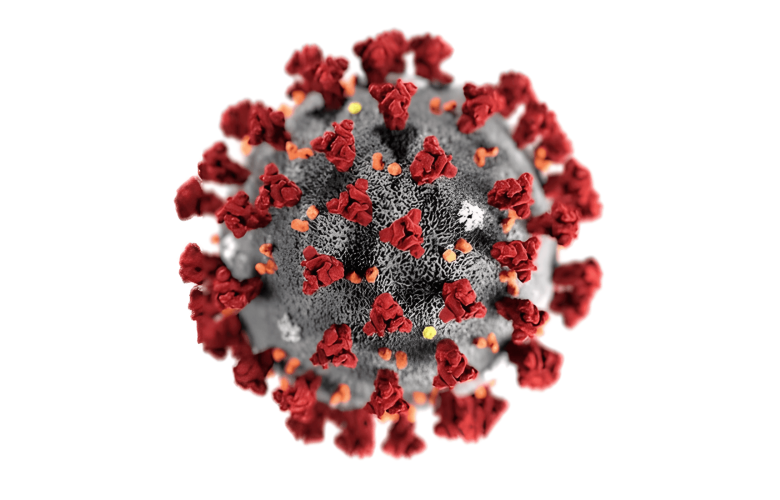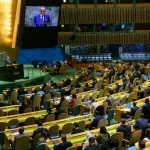aced with the looming specter of the COVID – 19 pandemic, it is of utmost importance that we look back and analyze the painful lessons from the various Ebola outbreaks over the years. Women were disproportionately affected by the outbreaks and if we don’t incorporate those lessons for the current disaster, women will again end up bearing the brunt of the consequences. These lessons are more salient for resource strapped African nations, where preexisting health inequity and rampant patriarchal exclusion of women severely limits their ability to access information and health.
Many diseases affect men and women differently along biological differences – for example, even though breast cancer affects both sexes, women are 100 times more at risk than men. When it comes to Ebola however, the evidence so far does not show a difference in disease pattern between men and women based on biology.1 Rather, the differences in experience have been based on the social dimensions of gender. Women were more at risk of contracting Ebola and experiencing its negative externalities due to a number of factors.
The First factor is women’s role in society. Women generally have the role of caretakers in many societies. This places them in the unique position of being exposed to epidemic-style diseases as they take on caring for the sick and dying – this has been the experience during the HIV epidemic where women were the chief purveyors of care with higher exposure rates.2 This was also true for the Ebola epidemics – for instance, women formed the majority of contacts, fatalities, and patients during the 2014 Ebola outbreak in Nigeria.3 This was also reflected in the WHO’s Ebola report during the 2015 outbreaks in Liberia and Sierra Leone where about four hundred more women had confirmed cases as compared to men.4 During the DRC’s outbreak in 2003, men actively avoided infection by making sure that it was women who took care of patients they suspected were infected.5 Further, higher exposure also resulted from more women being involved in health care provision, often with poor protective gear and infection protective practices3.
Another point worth considering is the impact burden of care can have on these women. Higher levels of stress caused by increased responsibility and interacting with dying family and patients can lead to unfavorable outcomes in mental health.2 As health systems crumble, women take on the role of caring for the multitudes of sick without proper training and end up being exploited – may female survivors have shared that they were blamed by their communities for the deaths of the people under their care.6 This led to further stigma and loss of livelihood, evictions and rejection by families.
The second factor is gender-based violence (GBV). Ebola worsened underlying gender inequities through the rise of gender motivated violence, as has been the experience with other disasters leading to heightened vulnerabilities for women.7 GBV rates skyrocket in the aftermath of large-scale humanitarian emergencies such as Ebola. A study in Sierra Leone following the outbreak found a clear increase in the number of transactional sexual interactions – reflecting the increased vulnerability experienced by women.8 Another report demonstrated that during the Sierra Leone crisis, unplanned teenage pregnancies went up by 65%.9
The third and final factor is access to care and information. The Ebola outbreak resulted in the decimation of the poorly run health systems – Liberia, Sierra Leone, and Guinea experienced high burden of poor maternal health outcomes as many pregnant women were either turned away because of overwhelmed providers or were too afraid to access health centers due to fear of contracting infection.2 One study showed the number of pregnant women attending health facilities declined by 30% in Sierra Leone following the initial stages of the outbreak.10 During the same period, the number of births attended by professionals in Liberia declined from 58% to 30%. Several stories were recounted where women were forced to deliver outside hospitals or ambulances as they were turned away by staff afraid of contracting Ebola.11 There are differing numbers of case fatality rates for mothers – mostly hovering around 40%.12
Women’s access was also severely limited when it came to information. A study conducted in Uganda assessing the knowledge of men and women about Ebola found that more women were unaware of the actual causes and modes of transmission.14 Young girls were even less informed about Ebola as they stayed home and were not able to attend community level education.9
However, before posting solutions, it is worth addressing a possible argument against the link between gender and Ebola. Several papers have shown that despite having a higher number of cases, women were significantly less likely to die of Ebola infection compared to men.15 How can we say that women are being impacted disproportionately if in fact less of them are dying? Well this argument fails in a number of ways. First, morbidity is a major measure of assessing disease impact. As has been stated, women were infected in higher numbers than men, translating to greater levels of illness and suffering as a group. For example, Liberia reported that 65 percent of those infected were women.2 Second, it fails to frame the concurrent impact of GBV, increased maternal mortality, and overall social disruption that has been associated with Ebola. Mortality is not the only metric for assessing disease footprint.
So, what actions need to be taken to address the three major aforementioned factors and their interplay with Ebola? The most important ones are gender mainstreaming and gender role reevaluation.
Gender mainstreaming is a concept first translated into a global agenda during the UN Women’s Conference in Beijing in 1995.16 Put simply, it is the practice of institutionalizing gender equity by promoting gender conscious practices, policy, and processes within various spheres of life.17 This concept can be applied at various levels of policy.
Governments need to include units within their structures with the explicit role of providing gendered analysis of various policies. The lens needs to be applied during the inception of policies and not as an analysis of a policy output. This should also be reflected in any office that is responsible for the planning and implementation of disaster preparedness. Interventions should consider existing gender practices and possible ramifications women might face secondary to disasters or disaster-specific interventions. For example, during the 2014 West Africa Ebola outbreak, travel and trade restrictions that were enacted in the Moro River region ended up disproportionately affecting women as they were responsible for most of the cross-border trade – a situation further compounded by the fact that they had to take care of the slew of orphans following the outbreak.10
Education strategy and materials about diseases should strive to be gender conscious. This means campaigns should engage community leaders and elders and ensure women participate during the process. Moreover, the content should also be framed in a way that puts the context of the community into consideration. Several focus groups of women survivors found that they were aware of the risks of handling the risks but were unable to do anything about it because caring was their responsibility.6 The message should be geared towards providing information about safety during care.
Furthermore, adequate protective gear and standard infection prevention practices need to be guaranteed during outbreaks – with emphasis on gender dimensions. As was discussed above, women tend to be on the frontlines at health care facilities as well. However, studies in Nigeria have shown that they were the ones who were much less likely to get proper protective gear when compared to men.3 This requires the governments to ensure that proper gear is present and makes it to the entire crew and not just men.
Concurrently, societies also need to re-evaluate the often-times rigid gender roles imposed on women. The burden of caring for the sick and ailing should be shared amongst the genders. One possible way to achieve this is to facilitate the assumption of caregiving roles by boys and men. One interesting argument is to have men take on 50 percent of the world’s unpaid work off of the hands of women.18 Although it might appear radical, similar initiatives need to be undertaken to distribute the burden of care across the community. Governments need to include policies that will prod and engage communities to question and redefine these established roles. Community leaders, elders, and religious institutions need to work in tandem with governments, civil societies, and rights activists in questioning the established norms and their impact on the health of women. These partnerships will have a better chance of producing organic solutions.
Work is also required to enhance the shared ownership of illness and care within communities. The experience of men avoiding getting infected by ensuring that women took care of suspected cases is a clear example of absence of ownership. Women are not non-members of the community and dumping cases on them to avoid being infected is something that shows a deep level of gender inequity and othering. Community engagement and consultation is very important with this regard. Such experiences need to be exposed by civil societies and rights groups and pressure needs to be mounted on both communities and governments to provide legal protection against such actions.
In conclusion, the entrenched gender inequities prevalent in the countries with Ebola outbreaks have resulted in higher burden of infection and consequent morbidity amongst women. The inequities have to be seen as social injustices and proper steps need to be taken to address the existent consequences and concrete measures put in place in order to make sure actions taken in the future guarantee the full participation and protection of women. A pragmatic approach to achieve this would be the wide adoption of gender mainstreaming measures as preparations are made for possible future health disasters like Ebola and COVID – 19. As health is a human right, any factors that cause inequity need to be seen as violations and tackled vigorously.
Agazi Fitsum Gebreselassie, M.D., MGHD (Candidate)





